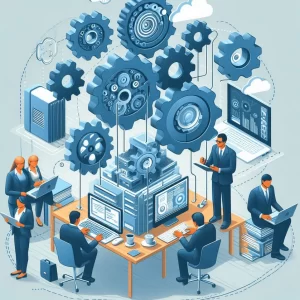Are You a Doer Seller or a Seller Doer?
You work for a company and are expected to design and/or deliver a product or service and, at the same time, are expected to grow sales revenue from existing clients. That is the role of a Doer Seller. You work in a company that requires you to sell your services first, and then deliver those services after you make the sale. That is the role of a Seller Doer. In both roles you could also be expected to manage delivery of what was sold.
Neither role has any boundaries. The roles cross different vertical markets and are not distinct to only a certain size company. Employees in any size company who are asked to serve two masters can be a Doer Seller or a Seller Doer. A person’s formal job title is not a key indicator of either role. Both roles thrive in the background, below the surface, and are an engine that sustains and drives ongoing revenue streams.
There are some really tough challenges associated with being successful at serving two masters, your primary job function and your secondary job function. What makes the role even more difficult is when priorities shift back and forth from doing to selling and from selling to doing. The people that fulfill these roles are not considered full-time sellers, and therefore, must face some additional challenges if they are to be successful on the sales side of the equation.
1. They must see sales from a professional perspective that empowers the individual to respect the seller role as much as the doer role.
2. They must understand the benefits of using formal processes for new business development, key account management, and strategic selling for complex sales opportunities.
3. They must understand the importance of managing a formal sales pipeline, including the statistics that offer the user an opportunity to improve performance results.
4. They must have the insight to better manage sales meetings to obtain results that serve the needs of both the buyer and the seller.
5. They must have the insight to better manage time and internal and external resources that are associated with closing a sale.
6. They must have the education to overcome the most common sales problems associated with today’s complicated sales environment.
7. They must use a common sales language so they can communicate more efficiently and more effectively amongst themselves, with people with other practice backgrounds, and with the full-time salespeople who work in the organization.
Let’s start with the common sales language. Below are four terms that encompass what sellers do, be they Doer Sellers, Seller Doers, or a full-time professional salesperson. For this article, I have simplified the definitions.
· Satisfy Demand: Occurs when a buyer continues to purchase a product and/or service from the seller as the preferred vendor. Renewals do take a certain amount of work from the delivery team in making sure the client continues to be “satisfied” with what is being delivered.
· Service Demand: Occurs when the buyer is looking for a solution to a problem and encourages other vendors to bid on the business, or when the buyer is simply looking to purchase a product or service. Servicing Demand is also the primary driver of ‘complex sales opportunities’ where strategic selling strategy and tactics become critical.
· Create Demand: Is the essence of new business development and encompasses three important skill sets:
o Being able to engage a buyer in solving an existing problem that remained unresolved over a period of months or years.
o Being able to identify a need the buyer didn’t realize they had and being able to engage the buyer in co-developing a solution.
o Being able to uncover the buyer’s pain and being able demonstrate how you can relieve, reduce, or eliminate the pain using your company’s offerings.
· Defend & Farm:When the account manager, or account management team, defends the account from competitive encroachment and continues to expand their reach within the account to grow profitable revenue streams in other business units and geographic locations, and when the account manager, or account management team, is able to generate revenue from other products and services not previously delivered within the account.
Doer Sellers spend the majority of their time Satisfying Demand and Defending & Farming the accounts they work in. Their challenge is in finding new sales opportunities in new accounts where they can both Service Demand and Create Demand.
Seller Doers on the other hand spend the majority of their time Servicing Demand and Creating Demand. In other words, they focus on new business development in new accounts. This does not mean they ignore Defending & Farming their existing accounts.
So back to the opening question; are you a Doer Seller or Seller Doer? More importantly, if you are a Doer Seller and you want to transition to the Seller Doer role, how do you make that happen?







